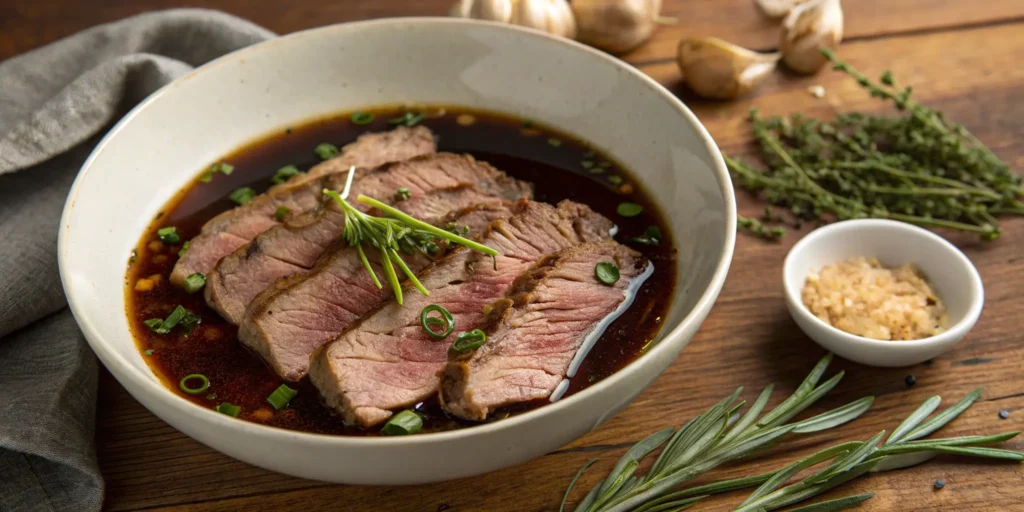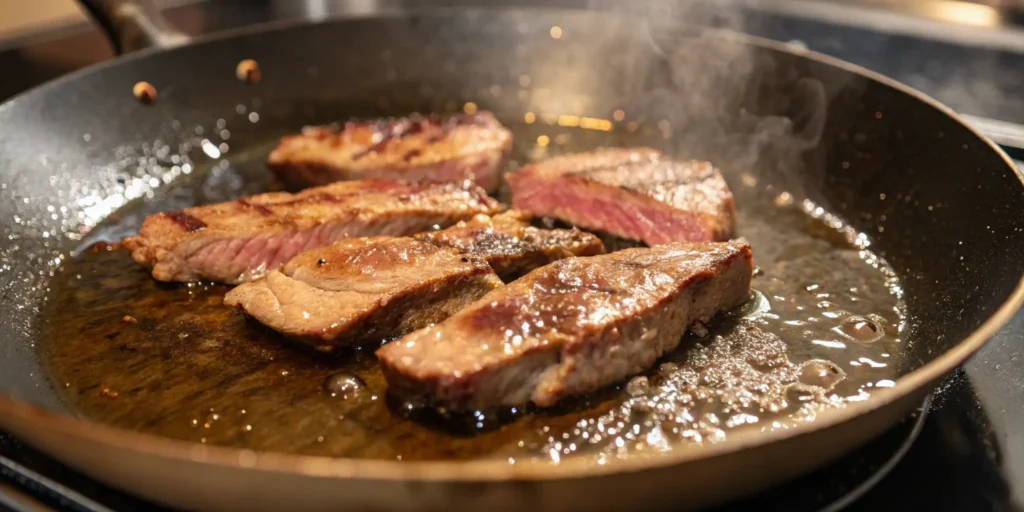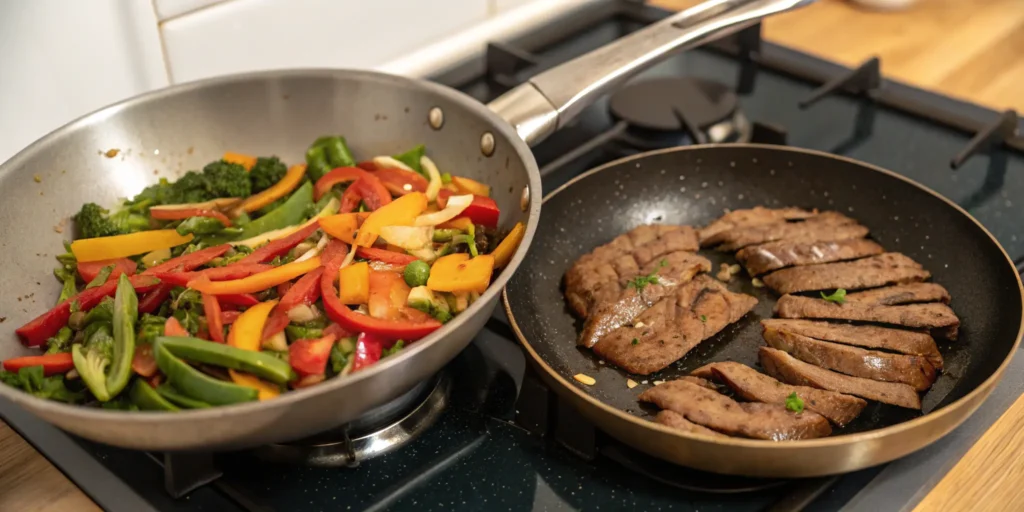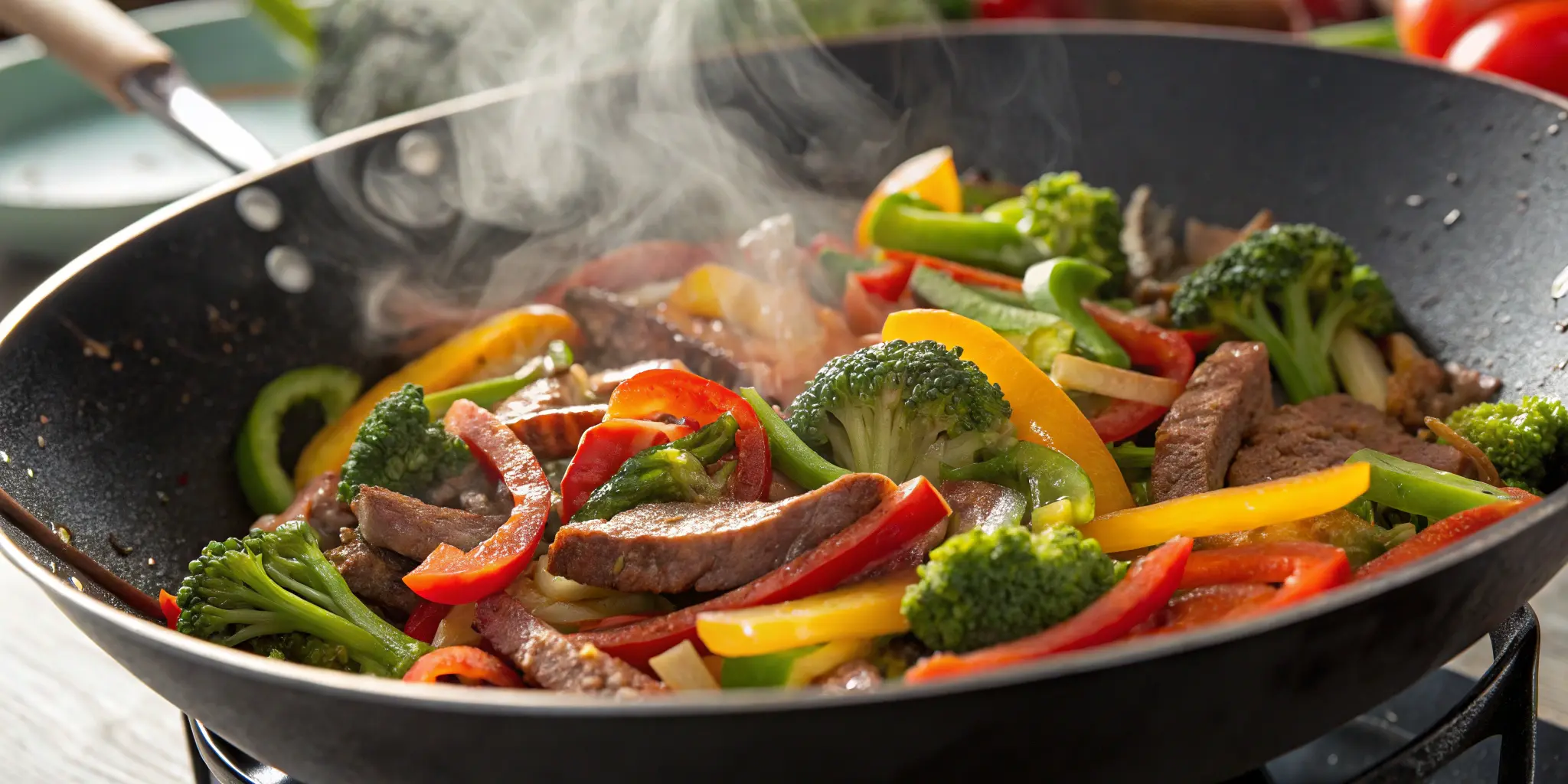Frying Steak Stir Fry: 3 Easy Tricks for Juicy Results
Table of Contents
Why Your Stir Fry Isn’t Juicy — And How to Fix It
If you’ve ever cooked a stir fry hoping for juicy steak but ended up with chewy disappointment, you’re not alone. Maybe your meat dried out, your veggies turned limp, or everything just lacked flavor.
Here’s the truth: even with quality ingredients, a stir fry can go wrong without the right techniques. But when you understand just a few simple tricks, you can consistently turn out a delicious, restaurant-quality dish in your own kitchen.
In this guide, you’ll learn three game-changing steps that make your frying steak stir fry incredibly juicy, tender, and bursting with flavor. Whether you’re new to stir frying or looking to refine your skills, these methods will elevate every bite.
Pick the Right Cut for Juicy Results
Not all steak is created equal, especially when it comes to stir frying. Choosing the wrong cut can mean dry, rubbery meat, even if you cook it quickly.
Top Cuts to Use
Your goal is to find cuts that are naturally tender or can be made tender with minimal effort. These are your best options:
- Sirloin – Balanced and affordable with good flavor
- Flank steak – Lean but flavorful; benefits from slicing against the grain
- Skirt steak – Rich and beefy, great for quick searing
- Ribeye – A pricier option but excellent marbling for juiciness
Avoid tough cuts like chuck or round unless you plan to marinate for several hours or tenderize with special tools.
Pro Tip: Slice It Right
Even a good cut can go bad if you slice it wrong. Always cut against the grain and keep your slices thin—about ¼ inch or less. This reduces chewiness and ensures even cooking.
Trick #1 – Marinate to Maximize Flavor and Tenderness
Marinades do more than add flavor—they actually change the texture of the meat, helping it retain moisture and cook more evenly.

The Science Behind the Marinade
Here’s what your marinade should include:
- Soy sauce – Delivers salt and umami, beginning the tenderizing process
- Vinegar or citrus – Provides mild acid to break down tough fibers
- Sesame oil – Enhances aroma and richness
- Cornstarch – Forms a protective layer that locks in juices
Quick Marinade Recipe
| Ingredient | Amount | Purpose |
|---|---|---|
| Soy sauce | 2 tbsp | Salt and umami |
| Rice vinegar | 1 tbsp | Acid for tenderizing |
| Sesame oil | 1 tsp | Nutty depth |
| Cornstarch | 1 tsp | Coating to retain moisture |
| Garlic + Ginger | To taste | Aromatic complexity |
Let the steak marinate for 30 to 90 minutes. Longer is fine, but avoid overnight marinating with acidic ingredients—they can make the meat mushy.
Trick #2 – High Heat for Fast, Flavorful Cooking
You want that charred exterior without overcooking the inside. That only happens when you use high heat.

Why Heat Matters
- Encourages the Maillard reaction, giving you a crisp, browned surface
- Prevents excess moisture from steaming the meat
- Allows faster cook times with better texture
Best Oils for High-Heat Cooking
| Oil | Smoke Point | Good For |
|---|---|---|
| Avocado oil | 520°F | High-heat searing |
| Peanut oil | 450°F | Neutral and versatile |
| Canola oil | 400°F | Budget-friendly choice |
Avoid olive oil—it breaks down at high temps and can give a burnt flavor.
How to Sear Steak for Stir Fry
- Preheat your pan for 2–3 minutes until it’s almost smoking.
- Add a thin layer of oil and swirl to coat the surface.
- Sear steak in small batches to keep the heat high and achieve that signature sizzle.
- Remove steak once browned—don’t cook through yet.
This method is crucial to getting that signature steakhouse-style crust in your frying steak stir fry.
Trick #3 – Cook Veggies and Meat Separately
This might sound like extra work, but it’s the real secret to a balanced, textured stir fry. Cooking everything at once seems quicker, but it leads to soggy vegetables and overcooked meat.

Why Separation Works
- Steak cooks fast—veggies need more time
- Layering flavors separately ensures better control
- Reduces water content and steaming issues
Your Stir Fry Game Plan
- Cook steak first, then remove it to rest.
- Stir fry vegetables like bell peppers, broccoli, or snap peas in the same pan.
- Add your stir fry sauce once the vegetables are nearly done.
- Return steak to the pan and toss everything together for the final minute.
This way, your veggies stay crisp, your steak stays juicy, and your frying steak stir fry tastes as good as it looks.
Simple and Juicy Frying Steak Stir Fry Recipe
Let’s bring all the tricks together in one flavorful, foolproof recipe you’ll want to make again and again.
Ingredients
| Item | Amount |
|---|---|
| Flank or sirloin steak | 1 lb, sliced thin |
| Bell peppers | 2, thinly sliced |
| Broccoli florets | 1 cup |
| Yellow onion | 1 medium, sliced |
| Garlic | 2 cloves, minced |
| Ginger | 1 tsp, grated |
| High-heat oil | 2 tbsp |
| Salt & pepper | To taste |
| Quick marinade | 1 batch (above) |
| Stir fry sauce | See below |
Stir Fry Sauce
- 1 tbsp soy sauce
- 1 tbsp oyster sauce
- ½ tsp sesame oil
- ½ tsp sugar
- 1 tsp cornstarch
- 1 tbsp water
Instructions
- Marinate steak in the soy-vinegar mixture for at least 30 minutes.
- Heat oil in a pan over high heat. Add steak slices in batches. Sear and set aside.
- Stir fry vegetables until just tender—3–4 minutes.
- Add sauce and stir until it thickens slightly.
- Return steak to pan, toss with veggies and sauce. Cook another 1–2 minutes.
- Serve hot over rice or noodles.
Mistakes to Avoid When Cooking Stir Fry
Learning what not to do is just as important as knowing what works.
Common Pitfalls
- Crowding the pan – causes steaming, not searing
- Cold oil or pan – meat won’t brown
- Too much sauce too early – can burn or dilute flavors
- Skipping rest time – leads to dry meat from lost juices
When you sidestep these mistakes, your stir fry becomes more than just a quick meal—it becomes a signature dish.
FAQ – All About Frying Steak Stir Fry
What’s the best steak to use for a stir fry?
Flank and sirloin are great options. They’re lean, cook quickly, and slice well for stir frying.
How do I keep steak tender in stir fry?
Use a short marinade, slice thinly against the grain, and cook over high heat without overdoing it.
Can I add frozen vegetables to my stir fry?
Yes, but thaw and pat them dry first. Excess water can lower the pan’s temperature and make your dish soggy.
Why separate steak and veggies?
Because steak cooks in minutes, while vegetables need a little longer. Separating them helps each ingredient shine.
Can I skip cornstarch in the marinade?
You can, but cornstarch adds a velvety texture and helps lock in moisture, making your frying steak stir fry juicier.
From Ordinary to Juicy in 3 Simple Steps
You don’t need complicated recipes or a wok straight out of a food show. With just a little technique—choosing the right steak, marinating smartly, and cooking with intention—you can transform your home-cooked stir fry into something worth repeating week after week.
So the next time you’re craving something quick, savory, and satisfying, remember these three steps. Juicy frying steak stir fry is just a few minutes away—and now, you know exactly how to get there.
Cook Your Best Stir Fry Tonight
What’s stopping you from making the perfect steak stir fry right now?
Grab a good cut, mix up a quick marinade, and fire up that skillet. With these simple steps, you’re in control—and your frying steak stir fry is going to taste better than ever before.
Bookmark this recipe, share it with a friend, or print it out for your fridge—because once you try it, you’ll be making it again.

